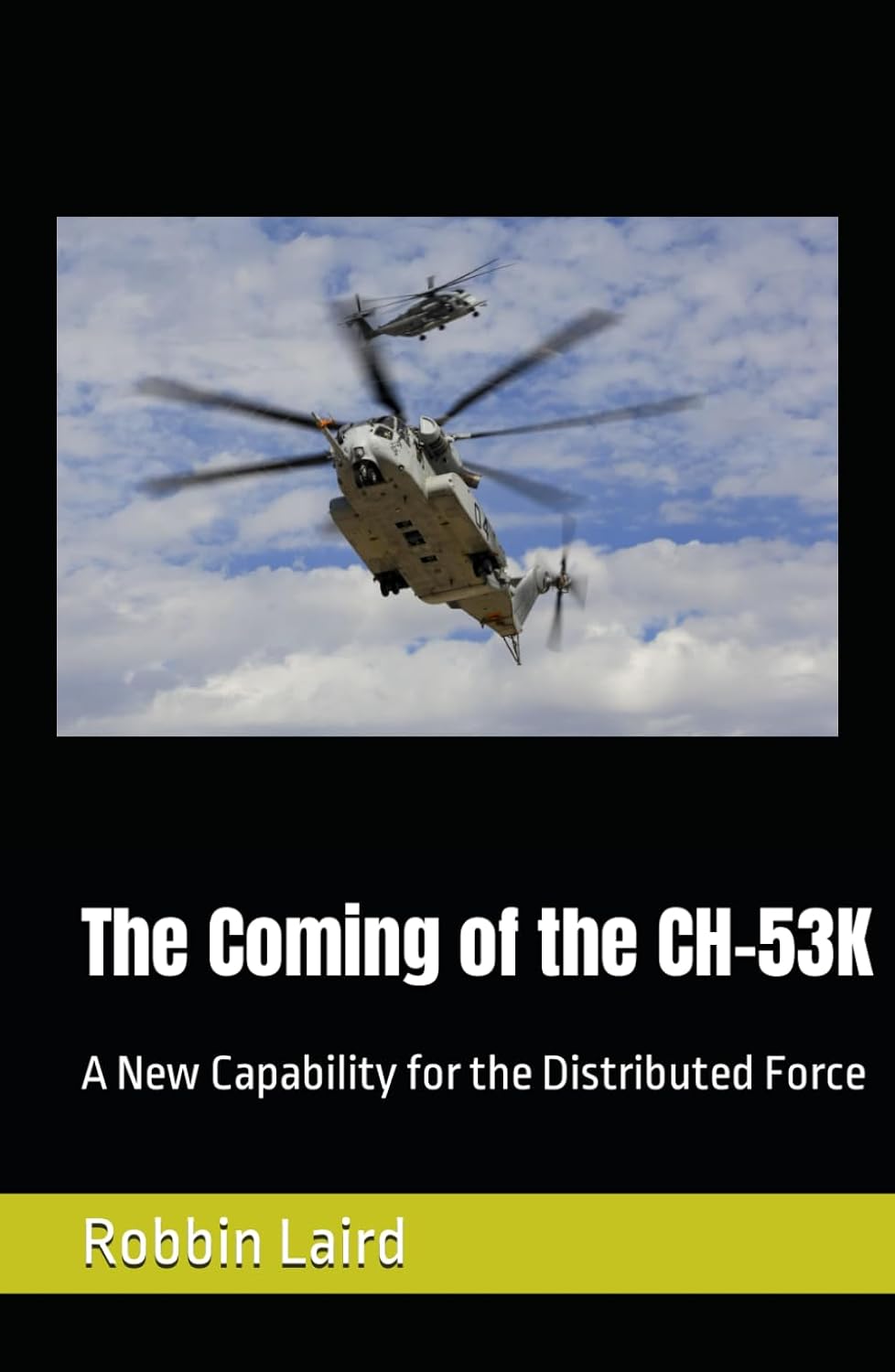The CH-53K: A Digitally-Enabled Heavy Lift Helicopter Comes to the Force
In my book detailing the coming of the CH-53K, I highlight what a digitally-enabled heavy lift helicopter can bring to the force.
The book explores the development, manufacturing, and sustainment of the CH-53K King Stallion helicopter.
Interviews with key stakeholders in the program, including USMC personnel, Sikorsky engineers, and NAVAIR program managers.
The book emphasizes the CH-53K’s role in enabling distributed operations and mobile basing for the USMC and its allies, particularly in the context of a contested and denied environment.
The book highlights the impact of digital technologies on the design, production, and sustainment of the aircraft, demonstrating how the CH-53K is a key component of a broader shift towards a more digitally connected and integrated force.
One aspect addressed in the book is how a digital aircraft provides a significant foundation for re-working the sustainment enterprise. The way I look at it, the digital backbone on the CH-53K has enabled the digital twin to drive the design and evolution process. As experience is gained from the use of the aircraft and data flows back to the digital twin, this will allow for configuration control and adaptation.
In addition, with the rapid arrival of advancing technologies, such as 3-D printing, which the Marines are clearly working with, distributed operations can be combined with digital manufacturing driven by the digital twin as well.
This means that the digital backbone on the aircraft allows not only for predictive maintenance and the organizational possibility of greater accuracy in having parts moved closer to areas of the operating force of the particular aircraft, but that 3-D printing can allow for the capability to provide for enhanced sustainability in the field and in the areas of operation.
This is how NAVAIR describes the CH-53K:
The CH-53K is the United States Marine Corps’ (USMC’s) heavy lift replacement for the CH-53E. The most powerful helicopter in the Department of Defense, the CH-53K is a new-build helicopter that will expand the fleet’s ability to move more material, faster throughout the area of responsibility using proven and mature technologies. Currently, nine aircraft have been delivered to the U.S. Marine Corps. At this time there are 44 program aircraft, either delivered or on contract.
The CH-53K is designed to carry 27,000 lbs (12,247 kg) at a mission radius of 110 nautical miles (203 km), in Navy high/hot environments, which is almost triple the baseline of the CH-53E. Its maximum external lift capability is 36,000 lbs (16,329 kg). It is also designed to have a smaller shipboard footprint, lower operating costs per aircraft, and fewer direct maintenance man hours per flight hour. The CH-53K is capable of landing and taking-off in a degraded visual environment and is currently on track for first fleet MEU deployment in FY2025. The USMC’s procurement objective is 200 CH-53K helicopters.
Features
- Transports two “up-armored” HMMWV or a Light Armored Vehicle variant under Navy high/hot conditions
- Cabin section is 12” wider than a CH-53E and can internally load an HMMWV, or carry 2 x 10,000lb AMC 463L pallets
- Next-generation joint interoperable CAAS “glass” cockpit
- Fly-By-Wire flight controls add additional survivability, safety and maintenance improvements
- Fourth-generation high-efficiency composite rotor blades with swept anhedral tips
- Elastomeric rotor heads
Specifications
Aircraft Length: 99 ft. 0.5 in.
Aircraft Height: 28 feet, 4 inches
Max Gross Weight: 88,000 lbs /39,916 kg (with external load)
Propulsion: Three T408-GE-400 turboshaft engines rated at 7,332 SHP
Crew: Two pilots, 1-3 aircrewmen (mission dependent)
Contractor: Sikorsky Aircraft, a Lockheed Martin Company

